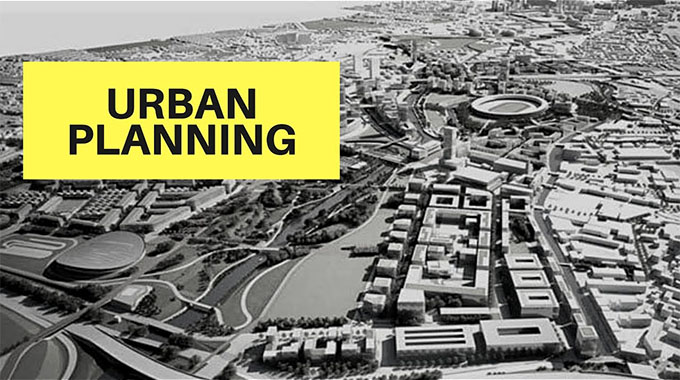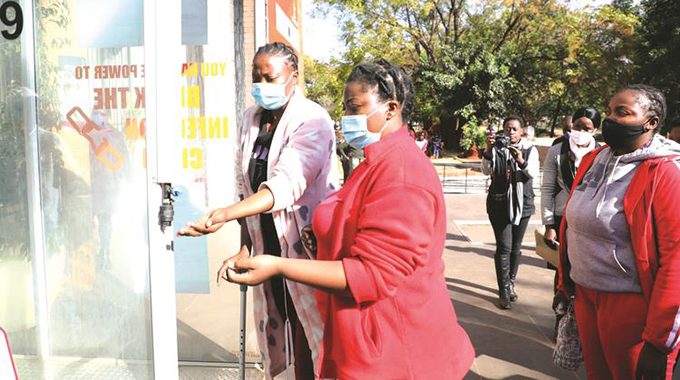2022 national census shows Zim rapidly urbanising

Herald Reporter
Zimbabwe is rapidly urbanising with the proportion of the population in urban areas jumping from 33 percent in 2012 to 38,6 percent by the end of April this year,
The greater Harare area has received the largest block of the new urbanites.
Initial results from the 2022 national census released on Tuesday by ZimStat, the national statistics agency that conducted the census in April, show that the urban population is now around 5,86 million out of the total population of almost 15,18 million.
Thus, the urban population is not just increasing in line with the general population growth, but is still subject to significant rural-to-urban migration as the proportions of rural and urban populations change. The main problem arising from the urbanisation is the imbalance in urban growth, with far too much in the greater Harare area rather than being spread across the country.
Out of these millions around 4,8 million live in the 30 defined urban council areas listed separately in these initial census results. These are the city councils, the municipal councils and the local boards, whose populations are recorded separately from the rural district councils which still hold the majority.
This urban listing includes the anomaly of ward 1 of Harare City Council, marked in the census as Harare Rural, although it is the home of almost all the “land baron” suburbs that have sprung up since the last census and are now being regularised. With 357 860 people is more than five times larger than the next largest ward in the city and holds almost 20 percent of the total population living in the City of Harare and is fairly obviously only rural by definition not by present land use.
The other just over 1 million urban people outside the 30 defined urban areas live in the small towns in the rural district councils and are represented in those councils by the councillor for the ward they fall in and have no formal town status. Some of these are quite old centres and others have sprung up more recently and the largest are heading for local board status in their progression to becoming municipalities at some stage.
But the 30 formal urban council areas are where 82 percent of the urban population are crowded.
The rankings, in terms of population, are changing.
Harare City Council now has a population of 1 849 600, including that urbanised former rural ward, and is even more dominant than before.
The City of Bulawayo, which had very low population growth in the last decade, in fact the lowest of any province, is still second with 665 940 people. It is now only around 35 percent the size of Harare City, and about a quarter the size of the whole greater Harare area. However, with the present push for industrialisation and the advent of a decent water supply at the end of next year the city’s growth is likely to resume.
Then we go back to Harare province with Chitungwiza Municipality in third place quite decisively with 371 244 people.
City of Mutare in Manicaland is fourth with 224 802.
The fifth largest urban council area will surprise almost everyone. It is Epworth Local Board in Harare Province with 206 365 people, having pushed City of Gweru into sixth place with its population of 161 292.
City of Kwekwe comes in seventh with 119 863, City of Kadoma eighth with 117 380, Chinhoyi Municipality ninth with 103 671.
Then we have Ruwa Local Board in the 10th slot, this town having been expanding rapidly in the last decade with generally good planning, to reach 94 083.
Technically, while sitting on Harare’s boundary with just 100m or so of a stream bed between the houses of the city and the houses of the town, it is still counted in Mashonaland East, now being easily the largest town in that province, about one and half times bigger than provincial capital Marondera.
The smallest city remains Masvingo City, the 11th largest urban council with 90 286 people. The 12th largest is Norton, another rapidly expanding satellite town in the Harare catchment, with 87 308.
While Harare province is the largest province in terms of population, 2 427 209 or 16 percent of the total, the greater Harare area is in fact even larger. Counting in Ruwa and Norton, both largely satellite towns of the Harare conurbation, takes the population of this giant urban area up to 2 608 330.
To this would have to added a number of semi-formal and informal urban settlements on the borders of the five urban councils as land barons were active especially in Goromonzi and Seke Rural District Councils, and there are some more formalised settlements in Zvimba and Mazowe Rural District Councils to the north and west.
All four surrounding rural district councils show populations significantly higher than the average rural district, suggesting that these overflow Harare-orientated settlements, where a lot of people work in Harare area, might well be more significant in total.
But even excluding these urbanised parts of the surrounding rural district councils, greater Harare now accounts for almost 45 percent of the entire urban population of Zimbabwe, and once the urban bits next door to the urban councils are thrown in could well be pushing 50 percent.
This huge concentration of urban population explains many of the problems within the greater Harare area, from the high levels of traffic congestion, the water shortages, which include the falling water tables as more boreholes are continually drilled, the severe pollution of the river system and other ills.
On the more positive side are those just over 1 million in the urban settlements in rural district councils, showing that development efforts to build up growth points and business centres are succeeding.
We are already seeing some of the small service centres in what used to be the commercial farming area are now expanding, especially in the tobacco zone.
Karoi, for example, is now the 22nd largest town in Zimbabwe with 37 564 people, and it was certainly nothing like that just a few years ago.
Provincial capitals like Chinhoyi and Bindura are also growing fast, and starting to come close to that string of Mashonaland West and Midlands towns and cities along the Harare-Bulawayo highway.
This urban development outside the greater Harare area will help a lot, not only providing new focuses of urban development and employment in many districts and reducing the need for people to move into a great city, but also providing the urban facilities close to where farmers and miners need them.











Comments